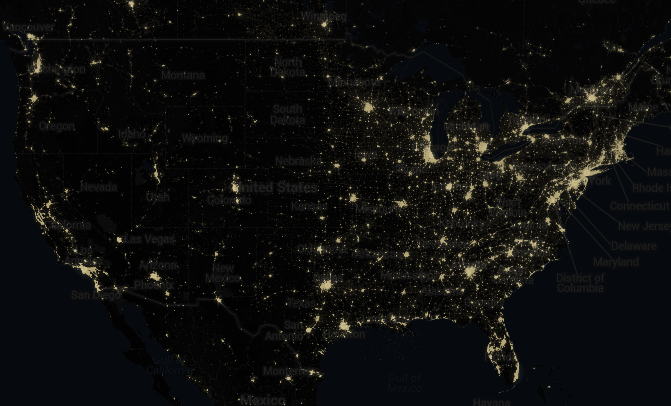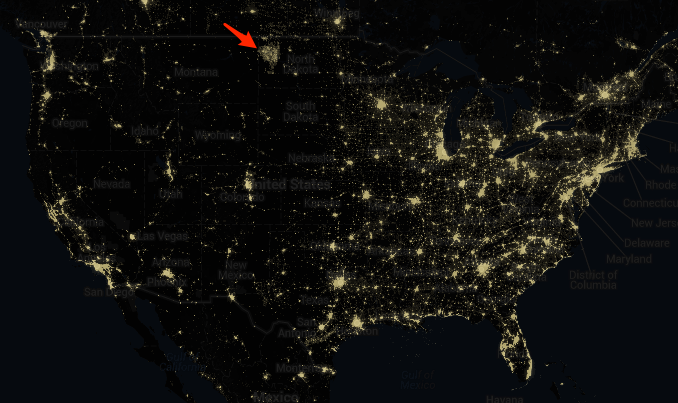Did you know you can’t actually see the Great Wall of China from space? It’s a little disappointing when you first hear it, because it’s one of the most prevalent myths about space. Even though you’d probably never get the chance to see for yourself, it’s neat to think that human-built structures can be seen from that far from the world we live in.
But don’t feel too let down. There’s another, even more amazing man-made structure, or rather a collection of structures, that you actually can see from space. And it’s pretty new too; it appeared on the surface of the earth in less than 10 years, and it’s one brightest patches of light in North America when viewed from space at night. It’s the Bakken oil boom.
In satellite images from 2005 of North Dakota’s Williston Basin, there is scarcely any light to be seen. Most of the state appears totally dark, filled with miles upon miles of empty plains. But something strange happens when you jump to images taken seven years later in 2012. A bright patch of light appears in the middle of the pitch black great plain. And it’s not any normal light either; it’s different from the city lights of New York, Chicago, or Atlanta. It’s warm, soft, and yellow.
The mysterious light in the images is actually being generated by the hundreds of new shale wells occupying the Williston Basin. Have a look at the two images side-by-side to see for yourself.
Before the Boom

After the Boom
This fascinating phenomenon is happening in shale fields across the country. However, the effect is most pronounced in the Williston Basin. With dozens of new wells popping up every few days, it’s no surprise that America is looking brighter.
You can get a closer look at the multiple U.S. shale fields and their new glowing presences using this tool built by Dr. Asanobu Kitamoto from the National Institute of Informatics.






